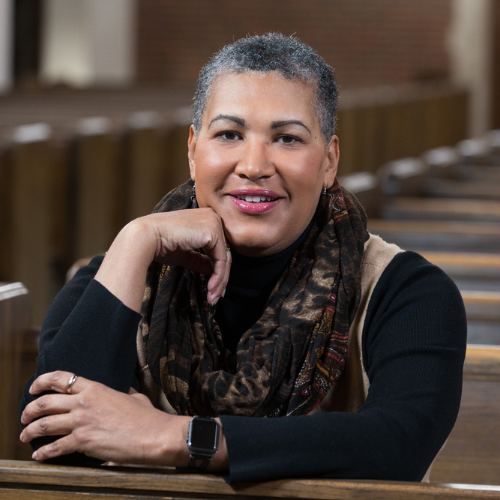Commentary on John 20:1-18
Again, we find ourselves on the Holy Day that, for many, is the second most familiar (with due acknowledgments to the marketing world’s assistance in remembering Christmas).1
Often, familiarity with the text allows us to miss the poignancy of the particular moments used to convey these events. The rehearsal of events we read today from what we know as John’s account of the good news represents a moment that had been recounted for 2,000 years. To present this event to both every Sunday participants and yearly Easter Sunday attenders as memorable and remarkable is a challenge.
Easter is the moment when the beginning meets the end. Neither the Gospel nor the Creeds end with Jesus crucified and buried. For Christians, the resurrection is what the fuss is all about. Women talked, couples argued, and the followers of Christ didn’t know how to respond to the publicity. Rumors of the resurrection captivated the talk, imaginations, and instant messages of everyone around Jerusalem that First-century weekend. Their words matter. And this narrative of events ties together the entire testimony recorded “that you may come to believe that Jesus is the Messiah, the Son of God, and that through believing you may have life in his name.” (John 20:31)
It is worth noting, by the time this account was first written, the Matthean, Markan, and Lukan accounts had been broadly circulated. And these accounts of the good news were written after the letters to the churches were widely distributed. Yet, this account is added as memorable and became remarkable. Attending to the selected moments offers new perspective on how the writer makes remarkable previously-noted events leading to this climax.
In the opening of her account of the events surrounding the Alabama police assault on peaceful demonstrators at the Edmund Pettus Bridge, director Ava DuVernay captures a moment we almost all are familiar with. History has rehearsed these events to stir within us a response to the horrors of those days. She directs the camera to testify to the next generation of the past. Cinematographically arriving at the 16th Street Baptist Church in Birmingham, Alabama, viewers follow a half dozen boys and girls on the church stairs. Taken in by the innocence and promise of the youth, we are caught off-guard when the stairwell explodes, and our picturesque moment collides with reality.
In that moment, we experience the rehearsal with the same incredulous amazement as the original event. The most talked about event in recent history with its graphic morbid visuals were etched into human memory forever. The preacher has the same task as the director: using words to recount a well-known event in such a way as to incite awe.
We are familiar with this being the third day, but that the writer describes it as early, on the first day (verse1) marking again the opening poetry that turns the knowing reader’s attention to the creation narrative. While it is still dark echoes the reality of the chaos of creation (Genesis 1:2) identifiable in the circumstance of today’s seekers of good news as hopelessness, horror, and hurt. How can it be Easter when it is still dark?
Darkness is not merely a time of day; it can also be the absence of light. And the absence of light would mean those times in our life when we feel that God is not present. A rehearsal of our darkness is interrupted by the explosive recognition of the resurrection. The God who spoke light into existence has raised to life the one described as the light of the world. The God who donated dignity to dirt has conquered death. Shall we read this as what Paul proclaimed to the Corinthian Church as the New Creation? (2 Corinthians 5:17)
That the record of the one who is first to the tomb is a woman, provides a powerful reminder that we confirm the testimony started by a woman: We have seen the Lord. With reactions from outrage to silence the writers of the book we call Christian Scripture preserve the revelation of God made known in Jesus with keen attention to the perspective of women. Karen Heidebrecht Thiessen acknowledges “The Johannine Jesus is not presented as seeking to modify the feminine role prevalent within Judaism; rather, Jesus seems to ignore it altogether as he calls women to public ministry and affirms them in the face of male opposition.”2 In this account, Jesus’ first sign is performed in response to a social disruption noticed by his mother (John 2:3) and an entire community is introduced to the idea of Jesus as Messiah on the testimony of a woman (John 4:42).
That Mary ran, as did the disciples in response to her announcement, establishes the sense of awe and significance that God’s intrusion into human history demands. The gospel writer does not tell us why she came to the tomb, instead highlighting her response to finding the tomb empty. In a #MeToo culture, it is worth noting that here a woman’s announcement shook the world—not to establish her victimhood but—to celebrate God’s victory to restore humanity’s capacity to bear the image of holiness on earth. What does that restoration look like today?
The writer lingers over the ordinary, just as the director’s camera held our attention long enough to magnify the wonder of the moment. Grave clothes. A tomb. Skepticism. The capacity of death to stifle hope and destroy the future. But hope is only stifled. What, here, are still only rumors of the resurrection rekindles the flickering flame of hope. At first, the woman’s testimony sends the men away, pondering the significance of the empty tomb. In fact, we have been pondering ever since. Mary remains, in the garden, alone. Gardens are the place when heaven and earth collide. Jesus approaches her with the humility of the divine taking on human flesh—he possessed no splendid form for us to see, no desirable appearance (Isaiah 53:3, Common English Bible).
In that ordinary moment, her expectations collide with reality. The one she mistakes (rightly?) as a mere servant, called her by name. Just as the Creator, the one Jesus called Father, named humanity as Divine Facsimiles, the one mistaken for a gardener calls the confused, the mourner, the woman, by name. How do we speak to and about one another, in light of the rumors of the resurrection?
Death destroyed. Hope restored. The resurrection confirms the good news that, when met by God in human form and called by name, the task of those who bear the image of God into the world is to bring this testimony to everyone. It is a familiar story. And the next generation deserves to hear it.
Notes:
- Commentary first published on this site on April 21, 2019.
- Karen Heidebrecht Thiessen, “Jesus and Women in the Gospel of John,” Direction, Fall 1990 (Vol. 19, no. 2). http://www.directionjournal.org/19/2/jesus-and-women-in-gospel-of-john.html


April 16, 2022